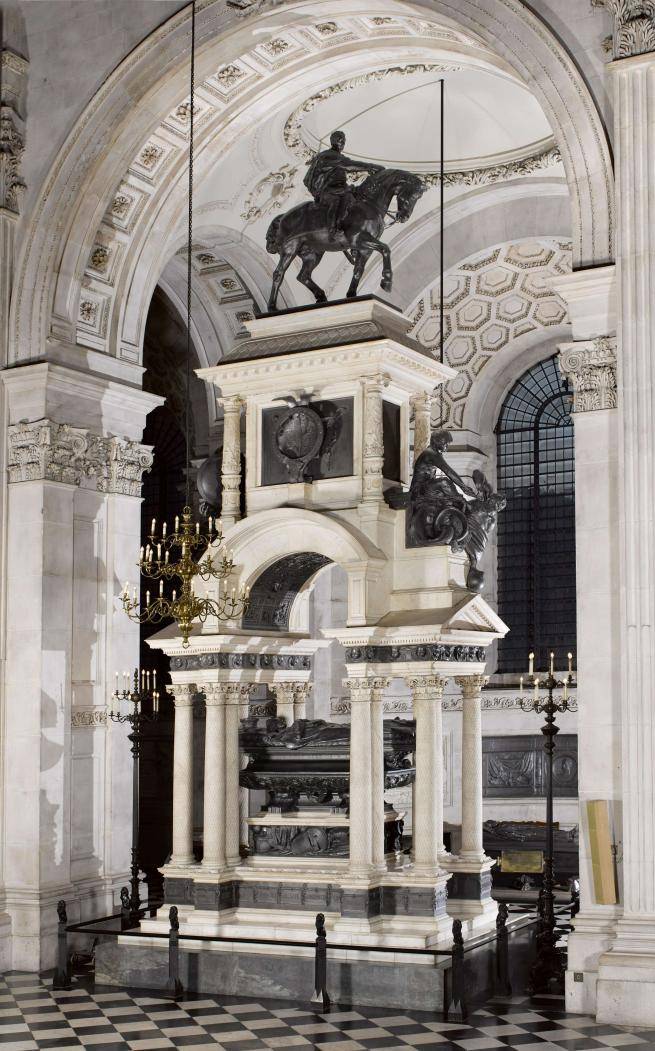Arthur Wellesley, 1st Duke of Wellington (1769-1852)

Image courtesy of Pantheons: Sculpture at St Paul's Cathedral.
Arthur Wellesley
1st Duke of Wellington (1769-1852)
Part of The East India Company at St Paul’s: A digital trail produced in collaboration with Stepney Community Trust.
Written by Abdul Sabur Kidwai, an India-born doctoral student who has long held a deep interest in the histories of India and Britain, having studied at the Aligarh Muslim University and the University of London.
The following text is available in Bengali, Gujurati, Urdu, Hindi, Punjabi, and Tamil. Please email CollectionsDepartment@stpaulscathedral.org.uk to request a copy.

![]()
The memorial for Arthur Wellesley, Duke of Wellington, honours the military leader and later Prime Minister of the country. His famous victories are recorded along the base of this monument, most notably at Waterloo, where his forces defeated Napoleon of France. He was also successful in his military expeditions in India, which is why the south side of the monument’s base lists Indian place names and the east side depicts Indian weapons. His victories contributed to the global supremacy of Britain in the 19th century.
Wellesley led the East India Company army in India for several years while his brother Richard was the Governor-General of Bengal. The brothers were instrumental in the Fourth Anglo-Mysore War of 1799 in which Tipu Sultan was killed fighting against the British forces. As Tipu Sultan was a popular and powerful ruler of Mysore who posed a considerable challenge to British rule in southern India, the British painted him as evil and despotic. Three earlier battles against Mysore could not subdue Tipu Sultan’s resistance. The British had already taken his sons hostage earlier; after his death, Tipu’s family were exiled permanently from their home. His defeat and killing at Seringapatam paved the way for continued British control and expansion in India.
This monument emphasises Wellington’s role in establishing Britain’s military might by highlighting the names of his victories across the world, which allowed it to become a superpower. The impact this supremacy had on the world was immense, because one country became the ruler of almost a quarter of the world, and set up an inherently unequal world system.
For detailed information about this monument, visit the Pantheons: Sculpture at St Paul's Cathedral website.

The East India Company at St Paul's
Explore the full digital trail produced in collaboration with Stepney Community Trust.




